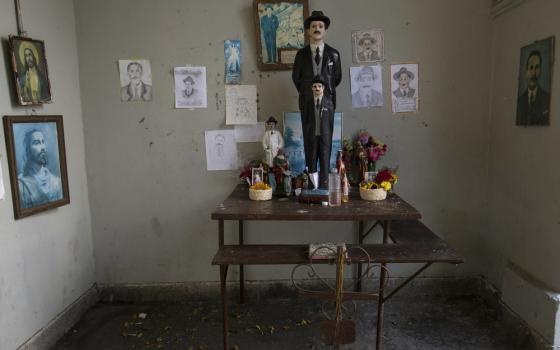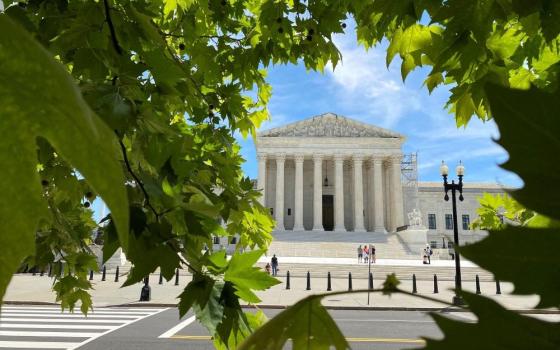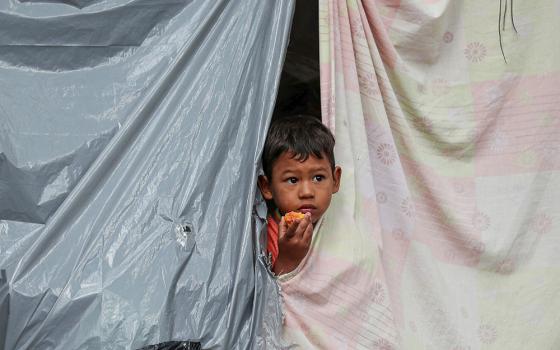
Declarations by two bishops that hospitals in their respective dioceses may no longer declare themselves “Catholic” appear to have had little or no impact on the medical centers’ patient census, health care delivery, income, spiritual outreach, or other elements of day-to-day operations.
“Nothing has really changed at all” at St. Joseph’s Hospital and Medical Center in Phoenix in the wake of Bishop Thomas J. Olmsted’s Dec. 21 decree that the 115-year-old facility may not continue to describe itself as an official Catholic institution, said Suzanne Pfister, its vice president for external affairs.
Officials at St. Charles Medical Center in Bend, Ore., also reported no discernible functional blips since the bishop of the Baker, Ore., diocese, Robert F. Vasa, and the hospital’s governing body issued a joint statement nearly a year ago announcing the diocese was withdrawing official endorsement of the hospital as Catholic.
 “It just has not been a big issue,” said Karen Shepard, St. Charles’ chief financial officer. “Nothing has really changed about the care we provide.”
“It just has not been a big issue,” said Karen Shepard, St. Charles’ chief financial officer. “Nothing has really changed about the care we provide.”
Shepard said there has been “no diminishment” in patient numbers, although they remain “somewhat flat, which is pretty much the trend in the state and the country.”
“The number of patients coming to the hospital has not changed at all,” said St. Joseph’s Pfister. “Our census remains strong. Just before Christmas, we performed more surgeries in one day than we have ever done in this history of St. Joseph’s.”
Both hospitals’ officials said funding from state, federal, private and foundational sources has remained unaltered.
Neither received financial support from their dioceses. On the other hand, St. Joseph “supports dozens of community programs and some of them are connected to the diocese” and on Jan. 8 the hospital “announced three significant grants to diocesan-related programs for the poor,” noted Pfister.
“We have seen no drop in donations,” she added. “Actually, we have seen the opposite. We have received dozens of new donations, big and small, since this happened. Just as one anecdote, at Christmastime our top administrators received several anonymous Christmas cards with cash stuck inside.”
In Oregon, Vasa asked St. Charles officials in 2007 for an audit of compliance with the U.S. bishops’ “Ethical and Religious Directives for Catholic Health Care Services.” The bishop identified problems and began talks, which hit an impasse.
In a joint statement Feb. 15, 2010, hospital administrators and Vasa said they “respectfully disagreed” on the meaning of some of the directives. The main point of contention was tubal ligation, a form of permanent female reproductive sterilization.
“It would be misleading for me to allow St. Charles Bend to be acknowledged as Catholic in name while I am certain that some important tenets of the ethical and religious directives are no longer being observed,” the bishop said in a statement issued jointly with hospital officials.
While the Bend declaration was framed in terms of a mutual separation of ways, the Phoenix split radiates tension.
The Phoenix diocese laid out specific action items it required of St. Joseph’s for it to retain its Catholic status after it was learned that a reported 11-week fetus was aborted there in late 2009 in what hospital officials stated was the only viable option to save a pregnant woman’s life.
The abortion was in direct violation of church teaching, stated Phoenix church officials.
In both Bend and Phoenix, similar “de-Catholicizing” moves were mandated, including removal and return of items belonging to the church, and forbidding celebration of Mass in the hospitals’ chapels.
In both cases, hospital administrators declared their institutions would continue to adhere to moral and ethical guidelines in place before the bishops’ sanctions.
“Not celebrating Mass in the chapel is probably the most tangible” result of Vasa’s decision, according to Kayley Mendenhall, St. Charles’ communications coordinator. “But Catholic chaplains and priests are perfectly welcome to administer rites and have access to patients.”
She described the relationship of the diocese and hospital as “amicable.”
St. Joseph’s remains a member of the Catholic Health Association (see related story on Page 5). St. Charles has not been a member of the association since 1976, hospital spokeswoman Lisa Goodman told NCR.
 According to Bill Danaher, who has been a lay Catholic chaplain at St. Charles for 24 years, “It is hospital policy that a priest may say Mass at any time he wants” and may use the chapel, although Danaher is not aware of the chapel being used for Mass since it was forbidden by the bishop last February.
According to Bill Danaher, who has been a lay Catholic chaplain at St. Charles for 24 years, “It is hospital policy that a priest may say Mass at any time he wants” and may use the chapel, although Danaher is not aware of the chapel being used for Mass since it was forbidden by the bishop last February.
“The question comes up commonly about how do we do things differently now, and the answer is that nothing has changed,” Danaher said. “We are not owned and operated by the church, but we strongly hold on to and are proud of our Catholic heritage.”
He emphasized “a lot of religious symbols” remain at the hospital, including a statue of Mary and Jesus in the hospital lobby, a large antique rosary in the chapel, and a relic of St. Charles Borromeo enshrined in the chapel.
“When the decision was announced last year, the CEO called me at home and emphasized that it was the bishop walking away from us, and not the other way around,” the full-time chaplain said.
In Phoenix, Pfister said St. Joseph’s chapel “remains the heart of the hospital.”
“All I can tell you,” said Pfister, “is that we have received a tremendous wave of support around Phoenix, the U.S. and even outside the country. We have received hundreds, maybe thousands, of calls, e-mails and letters from individuals offering their support. We have even had calls and letters of support from London, Germany and Japan and other institutional locations.
“Since this happened, we have had more than 9,000 visits to the page on our Web site that contains information about the bishop’s decision.”
[Dan Morris-Young is an NCR contributor.]
Look for more stories on Phoenix Bishop Thomas Olmsted and St. Joseph’s Hospital and Medical Center through the week:
|



